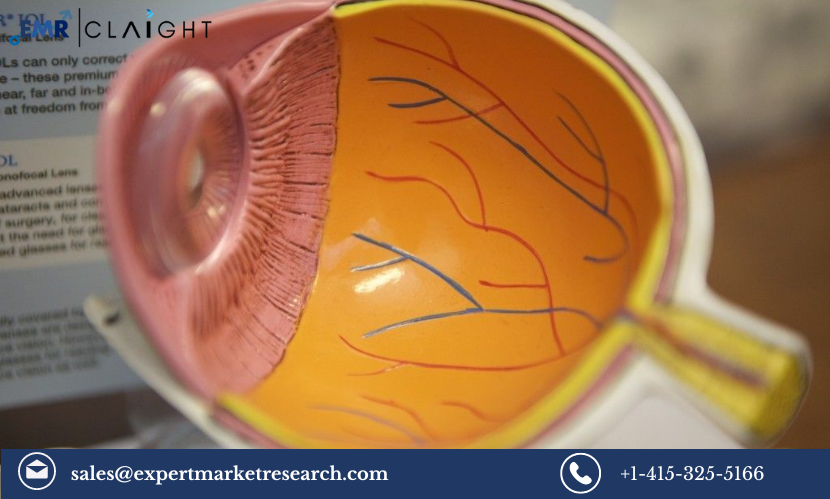The neovascular age-related macular degeneration (AMD) treatment market has been a significant focus in the medical field, particularly due to the increasing prevalence of the disease among the aging population globally. As of 2023, the market was valued at USD 11 billion in the 7 major markets. With continuous advancements in treatment technologies, the market is poised for substantial growth, projecting a compound annual growth rate (CAGR) of 7.5% during the forecast period from 2024 to 2032. By the end of this period, the market is expected to reach an estimated value of USD 21.1 billion.
Market Size and Share
The neovascular AMD treatment market’s expansion is largely fueled by the rising incidence of AMD as the global population ages, coupled with significant innovations in therapeutic approaches. The market is characterized by a robust competitive landscape, with key players investing heavily in research and development to bring forth more effective and efficient treatment solutions.
Trends and Innovations
Recent years have seen notable trends, including:
- Development of Gene Therapies: Researchers are exploring gene therapy as a long-term treatment to address the genetic factors contributing to AMD.
- Advancements in Anti-VEGF Therapies: The introduction of longer-lasting anti-VEGF injections has reduced the treatment burden for patients and improved visual outcomes.
- Rise of Combination Therapies: Combining drugs targeting different pathways of the disease is becoming a promising approach to enhance treatment efficacy.
Industry Segmentation
The neovascular age-related macular degeneration (AMD) treatment market is segmented based on various factors such as type of treatment, route of administration, and end-user. Each segment provides insight into the market dynamics and potential growth areas.
Type of Treatment
- Anti-VEGF Therapy: The primary treatment for neovascular AMD involves the use of anti-VEGF (vascular endothelial growth factor) medications. These drugs are designed to inhibit the proteins that stimulate the growth of abnormal blood vessels in the retina. Popular anti-VEGF drugs include ranibizumab (Lucentis), aflibercept (Eylea), and brolucizumab (Beovu).
- Steroids: While not as commonly used as anti-VEGF treatments, corticosteroids can reduce inflammation associated with neovascular AMD. They may be used in combination with other treatments or in cases where anti-VEGF therapy is not sufficiently effective.
- Emerging Therapies: Research continues into new treatment modalities, including gene therapy, which aims to address the genetic underpinnings of AMD, and combination therapies that target multiple pathways of the disease process. Novel drug delivery systems and sustained release formulations are also under development to improve efficacy and patient compliance.
Route of Administration
- Injectable: The most common route of administration for neovascular AMD treatments is through intraocular injections, which deliver medication directly into the eye. This method is primarily used for anti-VEGF therapies and certain steroids.
- Oral: Although less common for direct treatment of neovascular AMD, oral medications may be used to manage conditions that could exacerbate AMD, such as cardiovascular diseases or diabetes. Researchers are also exploring oral agents that could potentially affect the underlying processes of AMD.
- Other Routes: These include implantable devices that release medication over an extended period and topical treatments that are less invasive than injections. Advances in drug delivery technologies are expanding this segment.
End-User
- Hospitals: Hospitals form a major segment of the end-user market, providing treatments in an inpatient setting, especially for administering injections and monitoring acute responses to treatments.
- Ophthalmic Clinics: Specialized clinics are the primary care points for most AMD patients, where ongoing treatment including regular injections and assessments are carried out. These clinics often participate in clinical trials for new therapies.
- Ambulatory Surgical Centers: These centers provide facilities for minor surgeries and are increasingly equipped to administer intraocular injections for AMD treatment, offering a cost-effective alternative to hospital care.
Get a Free Sample Report with a Table of Contents: https://www.expertmarketresearch.com/reports/neovascular-age-related-macular-degeneration-treatment-market/requestsample
Geographic Outlook
The major markets for neovascular AMD treatments include the United States, Japan, Germany, the United Kingdom, France, Italy, and Spain. North America holds a significant share due to advanced healthcare infrastructure and high healthcare spending. However, Asia-Pacific is expected to witness the fastest growth due to increasing awareness, rising healthcare expenditures, and aging populations.
Key Players
Prominent players in the neovascular AMD treatment market include:
- F. Hoffmann-La Roche Ltd
- Bausch & Lomb
- Novartis AG
- Pfizer, Inc.
- AbbVie Inc.
- Santen Pharmaceutical Co., Ltd.
- Ophthotech Corporation
- Alimera Sciences
- GSK plc.
- Bayer AG
Forecast Period: 2024-2032
With a robust CAGR of 7.5%, the market is anticipated to grow significantly, driven by continuous advancements in medical technologies and increasing global demand for effective AMD treatments. The focus on early diagnosis and treatment to prevent severe vision loss will further fuel this growth.
FAQs
Q. What is neovascular AMD?
- Neovascular AMD, also known as wet AMD, involves abnormal blood vessel growth beneath the retina, leading to rapid and severe vision loss if untreated.
Q. Why is the market expected to grow?
- The growth is driven by an aging global population, increased prevalence of AMD, advancements in treatment technologies, and growing healthcare investments.
Q. Which region will lead the market growth?
- While North America currently leads the market, Asia-Pacific is expected to grow rapidly due to increasing awareness and healthcare improvements.
Q. What are the emerging trends in AMD treatment?
- Emerging trends include the development of gene therapies, advancements in anti-VEGF therapies, and the rise of combination therapies targeting multiple aspects of the disease.
Media Contact:
Company Name: Claight Corporation
Contact Person: Robin Johnson, Business Consultant
Email: [email protected]
Toll-Free Number: US +1-415-325-5166 | UK +44-702-402-5790
Address: 30 North Gould Street, Sheridan, WY 82801, USA
Website: www.expertmarketresearch.com
